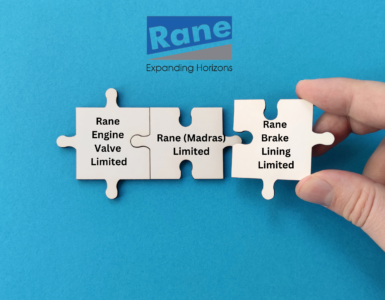In April 2014, Sun Pharmaceutical acquired 100% of Ranbaxy Laboratories for $4 billion to create world’s fifth largest specialty generic pharma company. Under these agreements, Ranbaxy will merge into Sun Pharma and the shareholders of Ranbaxy will receive 0.8 shares of Sun Pharma for each share of Ranbaxy. The exchange ratio represents an implied value of Rs 457 for each Ranbaxy share, a premium of 18% to Ranbaxy’s 30-day volume-weighted average share price and a premium of 24.3% to Ranbaxy’s 60-day volume-weighted average share price as of the close of business on April 4, 2014.
Drug maker Sun Pharmaceuticals has put on the block a few Ranbaxy brands which are a low priority in its domestic market. This was reported in the Economic Times. While Sun Pharma is a major global specialty pharma company with expertise in complex and niche therapy areas and a proven record of turning around its acquisitions, Ranbaxy has a strong global footprint and presence in the generic segment. The combined entity’s manufacturing footprint covers five continents, with products sold in over 150 countries. Sun Pharma estimates $250 million of synergies accruing from the merger in three years. Sun Pharma acquired Ranbaxy from Japan’s Daiichi Sankyo for $3.2 billion in stock in addition to assuming $800 million of debt. Sun Pharma has made nearly 20 acquisitions since its inception in 1983.
Sun Pharma buys Ranbaxy to create world’s fifth largest specialty generic pharma company
About Sun Pharma
Established in 1983 by Dilip Shanghvi and headquartered in Mumbai, Sun Pharma is an international, integrated, specialty pharmaceutical company. It manufactures and markets a large basket of pharmaceutical formulations as branded generics as well as generics in India, the US and several other markets across the world. In India, the company is a leader in niche therapy areas of psychiatry, neurology, cardiology, diabetology, gastroenterology, orthopedics and ophthalmology. The company has strong skills in product development, process chemistry, and manufacturing of complex dosage forms and APIs. Over 72% of Sun Pharma sales are from markets outside India, primarily in the US. Manufacturing is across 26 locations, including plants in the US, Canada, Brazil, Mexico, and Israel. Sun Pharma was listed on the stock exchange in 1994. Today Sun Pharma is the second largest and the most profitable pharmaceutical company in India, as well as the largest pharmaceutical company by market capitalization on the Indian exchanges.
Sun Pharma made 13 acquisitions between the 1997 and 2012, starting with the purchase in 1997 of Detroit-based Caraco Pharmaceutical Laboratories. That was the year in which it also bought stakes in two Indian pharma firms—Tamilnadu Dadha Pharmaceuticals Ltd and MJ Pharmaceuticals Ltd. In 2010, it acquired a majority stake in Israel-based Taro Pharmaceutical Industries, a move that more than doubled its revenue in the US to $1.1 billion from $484 million. Within two years, Sun Pharma bought two more drug makers in the US—Dusa Pharmaceuticals Inc. and the generic business of URL Pharma Inc.
About Ranbaxy
Established in 1961 and headquartered in Gurgaon, Ranbaxy is an integrated, research based, international pharmaceutical company producing a wide range of quality, affordable generic medicines, trusted by healthcare professionals and patients across geographies. Ranbaxy’s continued focus on R & D has resulted in several approvals in developed and emerging markets, many of which incorporate proprietary Novel Drug Delivery Systems and technologies developed at its own labs. The company has further strengthened its focus on generics research and is increasingly working on more complex and specialty areas. Ranbaxy serves its customers in over 150 countries and has an expanding international portfolio of affiliates, joint ventures, and alliances, ground operations in 43 countries and 21 manufacturing facilities spread across 8 countries. Ranbaxy is a member of the Daiichi Sankyo Group. Daiichi Sankyo is a leading global pharma innovator, headquartered in Tokyo, Japan. Daiichi Sankyo Co Ltd, Japan holds approximately 63.4% stake in the company. Ranbaxy went public in February 1973. Daiichi Sankyo acquired controlling in Ranbaxy in 2008 from its earlier promoters Malvinder Mohan Singh and family. Singh resigned in 2009 after Ranbaxy posted losses and after Daiichi Sankyo decided to get more actively involved in the newly acquired Indian unit.
Transaction Structure:
The transaction is expected to represent a tax-free exchange to Ranbaxy shareholders, who are expected to own approximately 14% of the combined company on a pro forma basis. Post merger, the holding of Sun Pharma’s promoters in the combined entity will be around 55% while Daiichi will have about 9%. Daiichi Sankyo would become the second largest shareholder in Sun Pharma and will have the right to nominate one director to Sun’s Board of Directors.
The transaction will need approval by a majority in number representing 75% in value of the shares present and voting at the shareholder meetings of each of Sun Pharma and Ranbaxy. Both Daiichi Sankyo (which holds approximately 63.4% of the outstanding shares of Ranbaxy) and promoters of Sun Pharma (who hold approximately 63.7% of the outstanding shares thereof) have irrevocably agreed to vote in favor of the transaction.
The transaction was stuck in a legal roadblock after some retail investors filed a writ petition in Andhra Pradesh High Court claiming that there may have been insider trading. There was heavy trading of Ranbaxy stock just six days prior to the announcement of this deal. The price of Ranbaxy share had moved up by almost 33% between March 28 and April 4, the six trading sessions before the deal was announced on April 7 by Sun Pharma. Retail investors say that both companies, as well as a wholly owned subsidiary of Sun Pharma i.e. Silverstreet, had used price sensitive information to their benefit and the retail investors were shortchanged.
Valuation
This exchange ratio represents an implied value of Rs 457 for each share of Ranbaxy, a premium of 18% to Ranbaxy’s 30-day volume-weighted average share price and a premium of 24.3% to Ranbaxy’s 60-day volume-weighted average share price, in each case, as of the close of business on April 4, 2014.
Daiichi Sankyo paid 61% more for Ranbaxy five years ago at Rs.737 a share.
The transaction has a total equity value of approximately US$ 3.2 billion. And along with the additional net debt of about US$0.8 billion, the total transaction value comes to around US$4 billion. The transaction value implies a revenue multiple of 2.2 based on 12 months ended December 31, 2013. In connection with the transaction, Daiichi Sankyo has agreed to indemnify Sun Pharma and Ranbaxy for, among other things, certain costs and expenses that may arise from the recent subpoena which Ranbaxy has received from the United States Attorney for the Toansa facility.
Key Impact and Rationale of the transaction:
The combination of Sun Pharma and Ranbaxy will create fifth-largest specialty generic company in the world and the largest pharmaceutical company in India with the leadership position in 13 specialty segments. A combined Sun Pharma and Ranbaxy will have a diverse, highly complementary portfolio of specialty and generic products targeting a spectrum of chronic and acute treatments.
The combined entity will have operations in 65 countries, 47 manufacturing facilities across 5 continents and a significant platform of specialty and generic products marketed globally, including 629 ANDAs. The transaction will combine Sun Pharma’s proven complex product capabilities with Ranbaxy’s strong global footprint, leading to significant value creation opportunities. Additionally, the combined entity will have increased exposure to emerging economies while also bolstering Sun Pharma’s commercial and manufacturing presence in the United States and India. It will have an established presence in key high-growth emerging markets.
The merger will see Sun Pharma’s revenue jump by a healthy 40% but its operating profit will rise by a meager 7.5%, based on pro forma 2013 financials. Consequently, its operating profit margin will decline from 44.1% to 29.2%. Thus, the merger will have a negative effect on its performance in the near term. However, it is anticipated that the merger would be cash EPS accretive within first 12 months of closure.
Sun Pharma expects to realize revenue and operating synergies of US$ 250 million by third-year post closing of the transaction. These synergies are expected to result primarily from top line growth, efficient procurement, and supply chain efficiencies. As part of the transaction, Sun Pharma intends to leverage the human capital that has supported both companies, in order to drive future growth.
For Daiichi Sankyo, the acquisition is an opportunity to exit Ranbaxy, which has not only fallen short of its revenue expectations from the 2008 deal but also took a toll on the company’s reputation and stock valuation back home due to serious compliance issues with FDA. Ranbaxy has been facing serious issues with exports to the US, its most important market, since 2009. All its Indian facilities exporting drugs to the US have been barred from doing so by the US drug regulator for failing to comply with manufacturing standards. Last year, Ranbaxy pleaded guilty to felony charges related to drug safety in the US and paid $500 million in civil and criminal fines under a settlement agreement with the department of justice. Further, Daiichi has been under severe pressure from investors and has been looking for a way out.
Ranbaxy has a significant presence in the Indian pharma market and in the US where it offers a broad portfolio of Andas (abbreviated new drug applications) and first-to-file opportunities in the US and a strong footprint in emerging markets like South Africa, Malaysia, Romania, Ukraine, and Europe – a region where Sun Pharma didn’t have a presence.
Note: ROW includes all non-US & Non-India sales + API and others.
In addition to size and scale benefits, the domestic portfolios of the two companies complement each other well. Sun’s domestic portfolio has a bias towards specialties including cardiovascular and oral anti-diabetes while Ranbaxy’s domestic portfolio has large primary care and over-the-counter segments as well.
Sun will benefit from Ranbaxy’s distribution network as well. Ranbaxy has a strong reach in the rural markets. Sun Pharma can leverage Ranbaxy’s distribution network and its strengths in over-the-counter drugs, chronic therapy, and hospitalization products.
As stated by Mr.Shanghvi, Sun Pharma’s primary focus will be to comply with regulatory standards. It is the key issue that Ranbaxy is facing now, and to get the company out of the US ban and make it healthy before jumping into the business priorities. He further stated that it is unlikely that the acquired business will turn profitable in the next one or two years.
Sun Pharma has a proven track record of creating significant long-term shareholder value and successfully integrating acquisitions into its growing portfolio of assets. For example, Sun had successfully resolved operational issues at cash-strapped Israeli drug maker Taro Pharma after it took control of the company in 2012 following a 2009 deal and a four-year legal battle. EBITDA of Taro was $100 million at the time of acquisition, which increased to $400 million in three years post acquisition. The share of Taro which traded at a yearly average price of $9/unit in 2009 is currently trading at around $110/share.
Conclusion
The valuation of Ranbaxy is attractive at this point in time when USFDA and regulatory issues are at a peak. Sun Pharma has followed a strategy of acquiring poorly performing companies and turning them around. Hence, the success of the deal would depend on how quickly Sun Pharma is able to resolve the regulatory issues of Ranbaxy, improve the operating margins of Ranbaxy and achieve the synergies. The merger won’t have too many cultural and integration issues since both companies are Indian. Besides, an all-stock deal, Sun Pharma has also been able to avoid any open offer possibility to the minority shareholders. Given the large diversified operations of Ranbaxy and potential synergy benefits, we find the transaction more value accretive for Sun Pharma shareholders.




